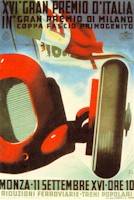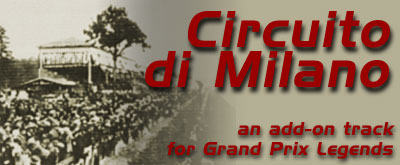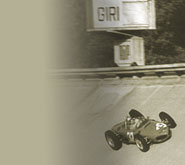|
The track was completed in an amazing 110 days, with the help of
3,500 workers and a specially constructed narrow gauge railroad
and was open for business for its first race on 3rd September 1922,
where Bordino won the (voiturette) race in a Fiat.
On September 8th 1922, Ruggiero won the motorcycle Grand Prix of
Nations on a Harley-Davidson, and on the 10th Bordino capped a great
week by winning the Italian Grand Prix in a Fiat 804 ..... And was
heard to declare after the race <cue heavy Italian accent>
"I love this track!" <G>
The track was used in this form for the next 5 years, although
the cars were able to exceed the design limit of 200 km/h on the
banking by 1924.
|





